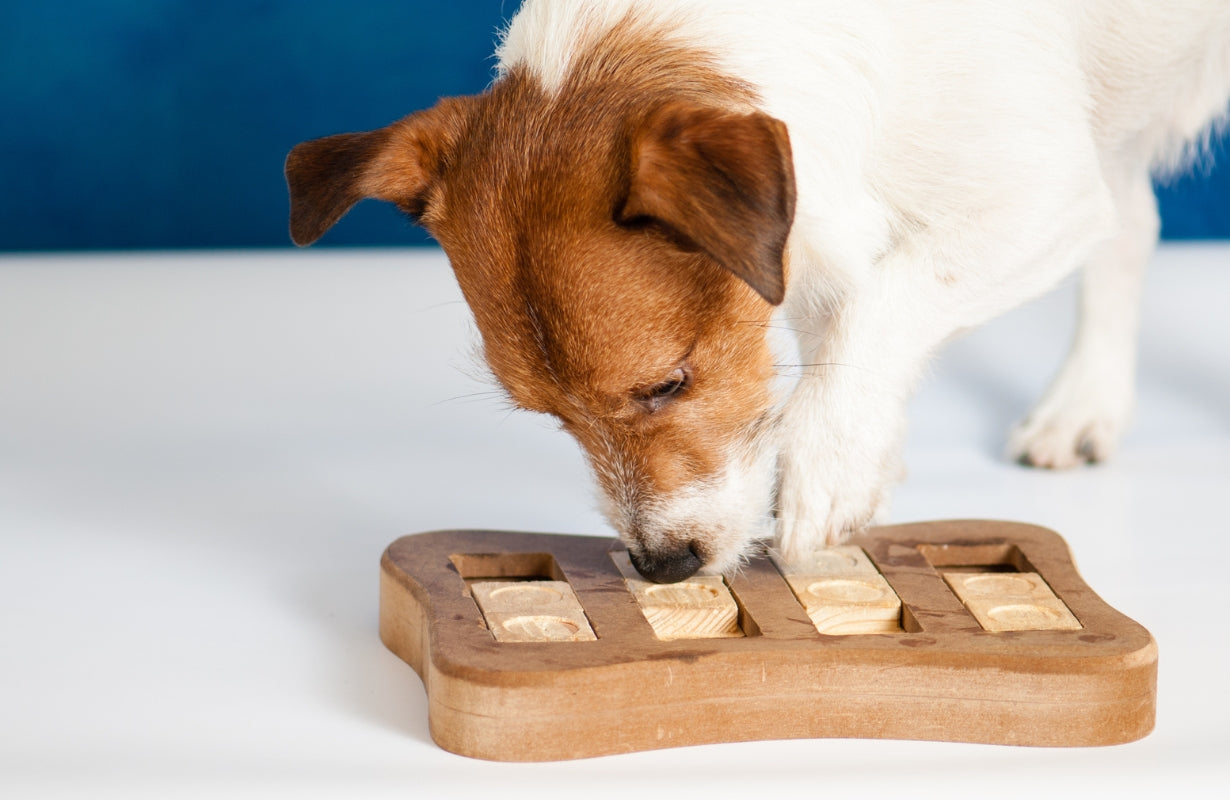As a loving dog owner, you know that keeping your furry friend mentally stimulated is just as important as providing physical exercise. Dogs are intelligent animals that thrive on mental challenges and enrichment. Playing brain games is a great way to keep your dog's brain active and engaged.
We will explore 7 fun brain games for dogs that you can easily implement to provide mental stimulation, prevent boredom, and strengthen the bond with your canine companion.
Game1. Treat Dispensing Toys
Treat dispensing toys are a fantastic way to challenge your dog's problem-solving skills and keep them entertained for hours. These toys are designed to hold treats that your dog has to figure out how to release by rolling, tossing, or manipulating the toy.
They provide mental stimulation, encourage natural foraging instincts, and offer a rewarding experience for your dog. You can find various types of treat dispensing toys on the market, such as puzzle toys, treat balls, and treat puzzles. Fill them with your dog's favorite treats or even make your healthy treats to add an extra element of fun and challenge for your pup.

Game2. Interactive Feeding
Turn mealtime into a brain game by using interactive feeding methods for your dog. Instead of simply placing your dog's food in a bowl, use food puzzle toys, slow feeder bowls, or scatter feeding to make your dog work for their food.
Food puzzle toys require your dog to manipulate the toy to release the food, while slow feeder bowls have ridges or obstacles that slow down your dog's eating pace. Scatter feeding involves scattering your dog's kibble or treats in the grass or on a mat, and your dog has to use their sense of smell and problem-solving skills to find and eat their food.
Interactive feeding provides mental stimulation and helps prevent gulping or overeating, improves digestion, and keeps your dog mentally engaged during mealtime.
Game3. Nose Work
Dogs have an incredible sense of smell, and nose work is a fantastic brain game that taps into this natural ability. Nose work involves hiding treats or toys for your dog to find using their nose. You can start with simple hiding spots around the house or in the yard, and gradually increase the difficulty level as your dog becomes more proficient. You can also use scent detection kits or scent puzzles specifically designed for dogs to provide more advanced challenges.
Nose work not only provides mental stimulation but also boosts your dog's confidence, encourages their instincts, and provides a sense of accomplishment when they find hidden treasures.

Game4. DIY Obstacle Courses
DIY obstacle courses are fun and customizable brain game that provides both mental and physical stimulation for your dog.
You can create your obstacle course using household items such as chairs, boxes, hula hoops, or tunnels. Set up the obstacles in a safe and secure area and guide your dog through the course using cues or commands. You can start with simple obstacles and gradually increase the difficulty level as your dog becomes more proficient. You can use treats or toys as rewards to encourage your dog to complete the course and make it a fun and rewarding experience.
DIY obstacle courses not only provide mental and physical stimulation but also improve your dog's coordination, balance, and confidence.
Game5. Hide and Seek
Hide and Seek is a classic game that can be easily adapted for dogs and provides mental stimulation and physical exercise. To play hide and seek with your dog, start by having your dog stay in one place while you go hide in another room or area of your house. Then call your dog's name and encourage them to come find you. You can also use treats or toys to lure your dog towards you as they search for you. Once your dog finds you, reward them with treats or praise. You can also switch roles and let your dog hide while you search for them to make it even more challenging.
Hide and Seek engages your dog's senses of smell, sight, and hearing, and encourages problem-solving skills as they search for you. It's a fun and interactive game that provides mental stimulation and strengthens the bond between you and your dog.
Game6. Training Sessions
Training is not only important for teaching your dog basic obedience commands but also provides mental stimulation and challenges their brain. Regular training sessions can help your dog learn new tricks, problem-solve, and improve their focus and concentration. You can incorporate different training exercises such as sit, stay, fetch, or even more advanced tricks like roll over or play dead. Use positive reinforcement techniques such as treats, praise, and play to reward your dog for their efforts.
Training sessions not only provide mental stimulation but also help reinforce the bond between you and your dog through positive interaction and communication.

Game7. Tug-of-War
Tug-of-War is a fun and engaging game that provides both mental and physical stimulation for your dog. It's important to play this game safely by using a designated tug toy and teaching your dog to play gently and release when you say "drop" or "enough."
Tug-of-War engages your dog's problem-solving skills as they try to pull the toy from your grip and provides physical exercise as they use their strength and coordination to play. You can make it more challenging by adding cues or commands such as "wait" or "take it" to make your dog think and follow instructions. It is a great way to bond with your dog and stimulate them mentally and physically.
Conclusion
Mental stimulation is essential for the overall well-being and happiness of your dog. Playing brain games provides an outlet for your dog's instincts, challenges their brain, and prevents boredom. These 7 fun brain games for dogs mentioned above, including treat dispensing toys, interactive feeding, nose work, DIY obstacle courses, hide and seek, training sessions, and tug-of-war, are all excellent options to keep your furry friend mentally stimulated and happy.


